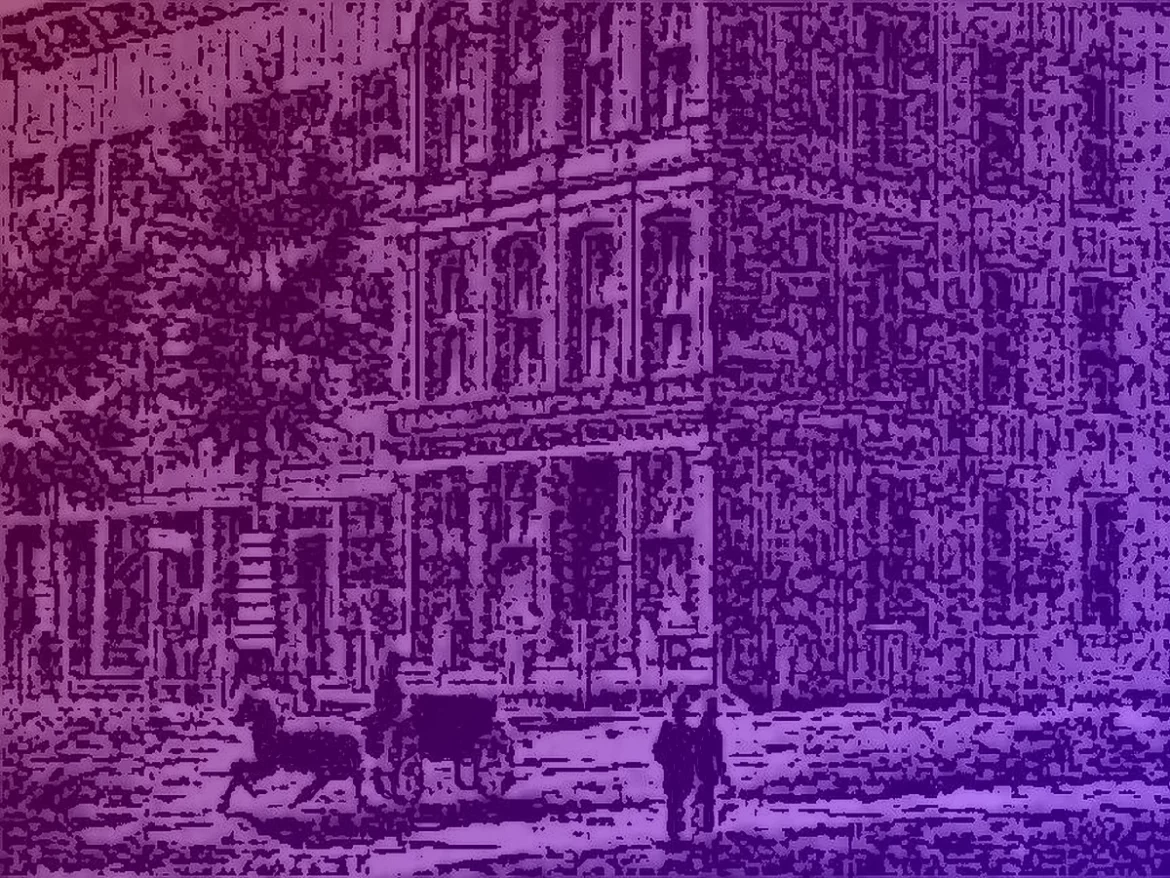On the morning of Jan. 26, 1876, a woman screamed from her bedroom window that burglars had robbed the Northampton National Bank and captured her husband.
The news sent Northampton, Mass., a small industrial city, into a frenzy. Several men walking to work at the shoe factory heard the woman and notified the police. What unfolded caused great excitement in the town and went down in U.S. history as the biggest bank robbery ever — until the next one. Two years later, the same burglars stole nearly $3 million from the Manhattan Savings Institution.
A short book published in 1876 tells the story of the Northampton National Bank Heist. It describes how robbers overpowered the cashier, forced him to give them the combination to the safe and then made off with $1.6 million in cash, bonds and other securities.
The haul in today’s dollars comes to more than $26 million. The Brinks Heist, in comparison, amounted to about $10 million in today’s money.
But that book leaves out one important detail about the leader of the ring that robbed the Northampton National Bank. That’s because police didn’t discover his identity until after his death two years later.
His name was George Leslie, a dapper young architect who moved in New York’s high society. However, he led a double life as a criminal mastermind. Police believed him responsible for 80 percent of the bank robberies in the United States between 1869 and 1878.
Northampton National Bank
Local businessmen established the Northampton National Bank in 1833, when banking began to take hold in country towns. With the opening of first a canal and then a railroad, Northampton grew into a thriving community of 25,000 people. Northampton National Bank grew with it into one of the leading country banks in the region with a good name and sterling character.
In 1874, Northampton National Bank officers decided to tighten security by installing a new cylinder pin-tumbler lock invented by Linus Yale. The lock required both a combination and key.
The bank hired Herring Safe Co. to install the new lock. Unfortunately, the Herring Safe employee who came from New York to install the lock had links to notorious bank robbers known as the Rufus Ring. William Edson, the employee, had made copies of keys used in previous bank robberies.
Rufus Ring
Edson copied the key to the vault of the Northampton National Bank. He then advised bank officials that only one man, Mr. Whittelsey, the cashier, should know the combination to the safe. They agreed.
For weeks the gang members traveled between Brooklyn, N.Y., and Northampton to plan the Northampton National Bank Robbery. They watched the bank and employees and the deputy sheriff.
They planned how they’d extract the combination from the cashier, how they’d escape and where they’d hide their loot.
Their leader, George Leslie, always insisted on such meticulous preparation.
The Heist
The masked men carried dark lanterns when they broke into the home of Mr. Whittelsey, where he lived with his wife, niece, an elderly woman, a married couple and an Irish servant. They bound and gagged them all in the same room, except for Mr. Whittelsey.
The thieves then choked and beat the cashier, demanding he gave up the combination. He refused, but they choked and beat him until he finally gave it up. The thieves knew the night watchman left work at 4 a.m., leaving the bank unguarded for several hours.
So just after 4 a.m., they marched Mr. Whittelsley to the bank, where they opened the vault, cleaned it of all its contents and made their getaway. Some of the men left by horse and carriage, while the others took the train back to New York.
At about 6:30 a.m., Mrs. Whittelsey freed herself from her restraints and rushed to her window. “They’ve taken my husband and are robbing the bank,” she screamed. “They’re all at the bank! Please help my husband!”
Caught
The Rufus Ring, however, had a problem. The securities were non-negotiable; only the person whose name was on them could cash them. They had no value unless the gang could sell them back to the bank.
Four days after the heist, the Northampton National Bank hired Pinkerton detectives. One month later, they received a ransom note for the securities with two stock certificates to prove their authenticity. Edson, still trusted by the bank, offered to act as a go-between.
Negotiations went back and forth, the bank stalling for time while the Pinkertons tracked the thieves.
Nearly a year after the robbery, three of the ringleaders were arrested. Edson turned state’s evidence, and the three went to prison. The Northampton National Bank never got its cash back, and an estimated 75 depositors lost their money.
The securities, however, were returned to the bank.
George Leslie
Not until after his death did police suspect George Leslie had ever committed any crime. He was handsome, well-mannered and well dressed, an habitue of the opera and society parties.
He arrived in Manhattan in 1869 from Cincinnati, Ohio, where his wealthy father had paid $300 to keep him out of harm’s way during the Civil War. As a draft dodger, people scorned him as worse than a deserter and ostracized him from Cincinnati society. So he abandoned his architectural practice and came to New York to start a new life. His goal, he told friends, was to make some easy money.
Leslie then assembled the cleverest robbers into the Rufus Ring and fastidiously planned his crimes.
Before a robbery, he visited a bank to check out its layout, sometimes depositing his own money. His architectural training allowed him to draw up meticulous blueprints and to build a replica of the bank vault inside an abandoned warehouse.
For months he rehearsed each robbery with his gang, assigning each member a specific job. While they drilled over and over, Leslie timed each step down to the second. They even practiced in the dark.
George Leslie never got caught, but his weakness for women did him in. He carried on an affair with the 21-year-old wife of one of his gang members. When he and his gang planned to rob the Manhattan Savings Bank, she lured him to a rendezvous.
Police discovered his body in a field miles north of New York City, but couldn’t identify him right away. Eventually they concluded his mistress’s husband murdered him. Shortly afterward police found her body near the Brooklyn Bridge, her throat cut.
Northampton National Bank Building
The Rufus Ring carried out the Manhattan Savings robbery after George Leslie’s death. Police, however, tracked them all down and brought them to justice. And they eventually connected George Leslie to the Northampton National Bank heist, along with a string of others from upstate New York to Baltimore to Kentucky.
The Northampton National Bank building still stands at 135 Main St., the original vault intact. Owned for a time by Kevin Eastman, a creator of the “Teenage Mutant Ninja Turtles,” a new owner announced in 2017 the building would be restored.
Today, a smoke shop called The Vault operates out of the ground floor of the old Northampton National Bank. In 2019, the building’s owner commissioned an artist to paint a mural depicting the robbery.
If you enjoyed this story about the high-society criminal who robbed the Northampton National Bank, you may also be interested in the sporting gentleman who robbed the robber barons (click here).
With thanks to King of Heists by J. North Conway. This story was updated in 2023.




1 comment
Sloppy editing. Edson was installing the security system (I presume) in 1874, not 1974, as wriiten. Also, why does the pop-up invitation to join the New England Historical Society (I am already a member) obscure each story before it can be read? It is redundant and annoying.
Comments are closed.